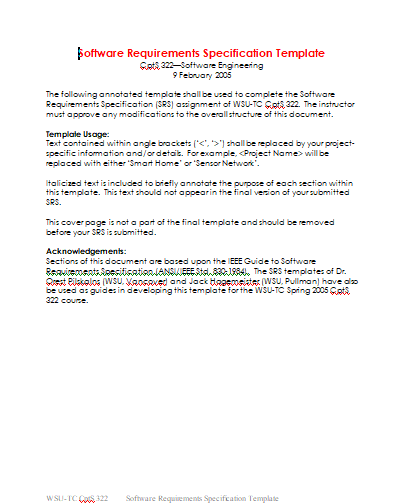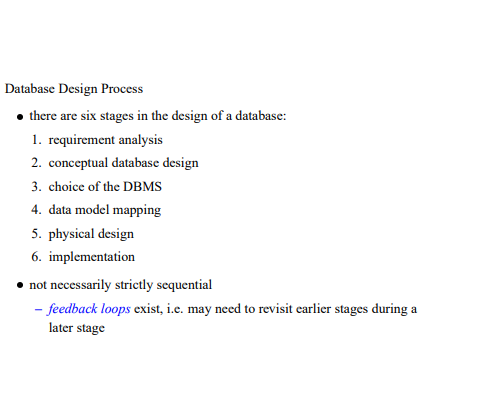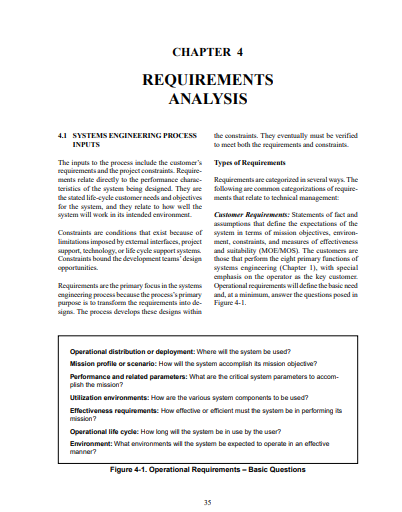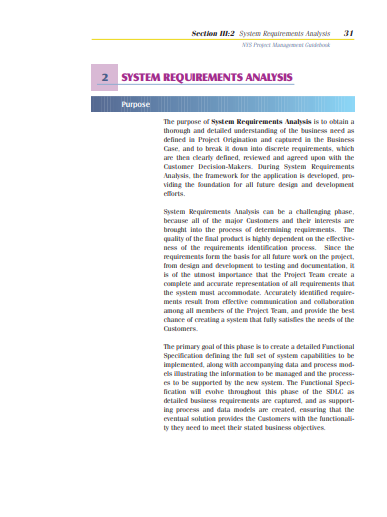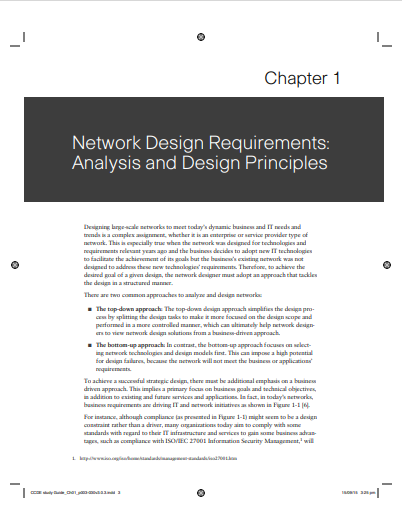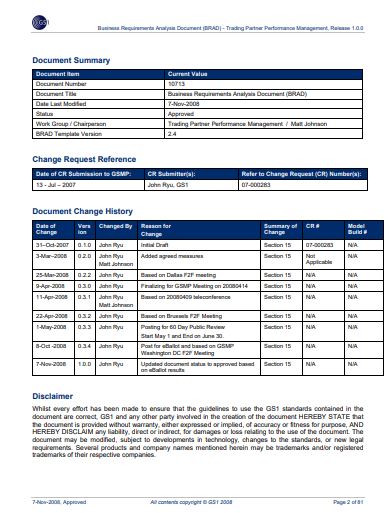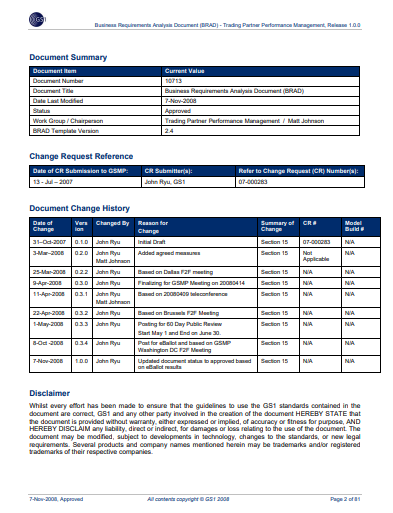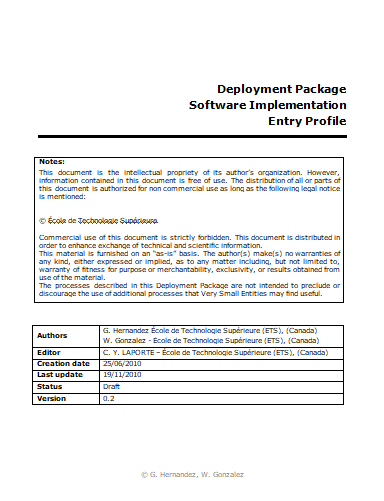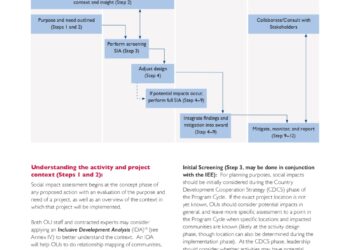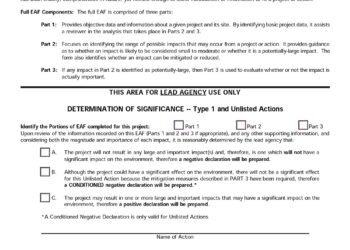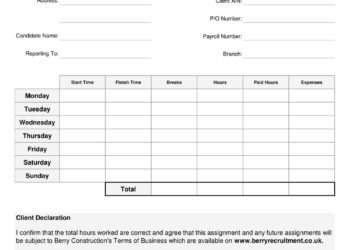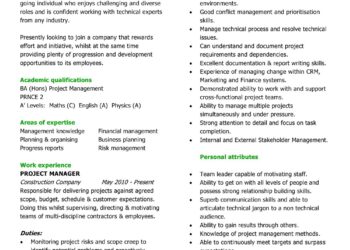Requirements analysis templates are used to get the user’s expectation and need about a new business, product, or activity. It is the best way to meet the user’s expectations and avoid any major problems due to the difference between the required and final projects. The requirement analysis document templates help you to complete your project successfully. You can get various requirement analysis templates with examples to understand the user expectations for building or modifying a project.
The requirement analysis process helps you define the project scope by which you can decide the resources and time duration needed to complete this project successfully. It is also known as requirement engineering, requirement gathering, and requirement capturing. In this article, you’ll get everything to know about the requirements analysis process.
Requirements Analysis is crucial to understand the market dynamics that influence those requirements. Delve into our insightful Stock Analysis Templates to gain a deeper perspective. Together, they provide a comprehensive understanding, allowing you to align business requirements with market trends, and ensuring your strategies are both informed and effective.
Requirements Analysis Templates
Business Requirements Analysis
|
User Requirements Analysis
|
Software Requirements Analysis
|
Database Requirements Analysis
|
Customer Requirements Analysis
|
Training Requirements Analysis
|
What is Requirement Analysis?
Requirement analysis is an early-stage process to get project requirements. When there is a need to start a new project or modify the existing one, then you should properly document what customers actually expect from this activity. It is also helpful to set the project scope, identify the tasks, and set the timescale and resources to complete this project successfully. Analysts have to understand the requirements of all the stakeholders involved in this project. A collection of well-designed requirement analysis templates helps you to document your needs easily. These templates are available in Word and PDF format and allow you to make changes as you desire. It helps to remove the communication gap and build a great relationship among the stakeholder to understand what they expect from this project.
The stakeholders are members of a group who are involved in a project development process to achieve the project objective. Make sure the requirement should be quantifiable, traceable, actionable, and free from any ambiguous statement. It is easy to make changes and fix the problem at the early stages of a project to meet the set goals. The requirement analysis should be stated clearly and concisely to make it successful. You can see the sample template of requirement gathering to know more about it.
Requirements Analysis Examples
System Requirements Analysis
|
Network Design Requirement Analysis
|
Functional Requirements Analysis
|
Project Requirements Analysis
|
Use Cases Requirements Analysis
|
System Requirements Analysis 02
|
Requirement Analysis Process
Whenever a client needs a change in a business or building a new one, it is essential to know what they want at the end of this project. Simply speaking, it is a process of gathering and identifying the requirement of all stakeholders to deliver the project according to their expectations. The primary purpose of this process is to document the project’s needs related to the project objectives. When you identify the project requirement clearly and concisely, there is less room for any significant problem. Follow the below-mentioned steps to complete this stage successfully.
- Identify stakeholders: The first step of the requirement analysis process is to identify the members involved in this project to make it successful. Stakeholders of a project are customers, end-users, project managers, developers, investors, government authorities, and others actively involved in this project.
- Gather Requirements: When you identify the stakeholder of the project, the next step is to gather their requirement. What they want from this project is the main concern for which these activities are performed. It would be best if you asked every project stakeholder to know what they expect from this project. All the stakeholders must share common requirements to achieve the goals of this activity. There are some techniques used to gather requirements are as follows:
- Conduct Interview: You can hold interviews with the stakeholders one by one to understand their expectations from this project. It is a well-known technique to identify the scope of the project.
- Focus Group: Focus group is just like an interview with a group of people to capture their ideas and opinion about a specific topic. It is a way to gather all the stakeholders and get their needs or opinions about some activity of the project
- Requirement workshop: This technique is generally used to discover, identify and prioritize the requirement by getting the stakeholders together. The key to the requirement stage success is stakeholders share common needs, and all the requirements are identified clearly.
- Prototyping: Prototyping is one of the modern and popular ways to gather requirements. You show the prototype of the final product to the client using the early-stage requirement and get an idea of what your client actually wants.
- Analyze Requirements: This step is used to determine whether the gathered requirements are unclear, ambiguous, or incomplete, then solve this issue to prevent any conflict. You should solve all the problems related to the requirement gathering and categorize them into groups before proceeding next.
- Requirement modeling: At this step, you need to document your requirement using natural language and a model that shows your project flow of work.
- Review and finalize requirements: Once the requirements are gathered, it’s time to know which requirements are actually traceable, actionable, and achievable. If there is any error, solve to make this document base for proceeding with the project next.
Requirement Analysis Technique
Requirement Analysis Techniques are used to map the workflow of the project. Organizations used it to understand the process of the project and make changes to achieve the project’s objective. You can see requirement analysis examples and templates free from our collection. These are available in PDF, DOC, and Word formats; you can download them in any format to understand them clearly. The main requirement analysis techniques are as follows:
- FlowChart: Flowchart is one of the popular types of diagrams used to graphically represent the execution flow to achieve the desired goal of a project. It is the best way to understand your system needs. The representation of the data flow helps you to know the tasks performed to complete it successfully. It is easy to make changes when there is the presence of any requirement which is unachievable.
- Gap Analysis: Gap analysis is a method to make a comparison between the current situation of the project and the expected one. It is a way to know whether the direction of the process is right to make this project successful. When you know the project’s current state, it is easy to increase the project’s performance and its efficiency. If there is any gap between the idea and the project’s current state, then evaluate the solution to achieve your project’s set goals. You can get the system requirement gap analysis templates to know that difference and set the direction to achieve the desired goals.
- Business Process Modeling and Notation(BPMN): This technique is best for any business process to depict the project’s execution step by step visually. BPMN is a popular technique to represent the business process graphically by using notation. These notations help you understand the tasks carried out during the business procedure. All the stakeholders can communicate effectively with the help of this technique.
- Data Flow Diagram: The Data Flow Diagram is used to represent the process of the system, which is difficult and complex to understand. This diagram helps you show the process’s flow to all the stakeholders to get their ideas and opinion about it. It describes the input, outcome, process, and relationship of the subprocess to understand the task, identify the deadline, and calculate the resources to complete the project successfully.
- Gantt Charts: Gantt Chart is used when you represent the process with the timescale. It is the best way to show you the business procedure when you need to complete it. You can represent the schedule of the project process with the last and end quickly.
5 Common Requirement Analysis Mistakes to Avoid
When organizations start a new project or modify the existing one, a requirement analysis document is essential to know the client’s expectations. In this way, well-designed system requirement analysis templates save you lots of time and effort to make it from scratch. When you are working on multiple projects, there is room for errors and mistakes. The mistakes that you must avoid while requirement gathering are as follows:
- Clients can’t describe their needs: When clients can’t describe clearly what they actually want from this project, it may create problems in the future. Try to understand their expectations and start the process to make it according to their needs.
- Ambiguous language: One of the major problems that may occur during the requirement analysis documentation is including the ambiguous statement in it. Ambiguity means there are multiple meanings of one statement. The problem is to start with ambiguous words, try to eliminate them, and use clear and simple language to understand the requirement effectively to make it successful.
- Unachievable requirement: Before finalizing the requirement, review it to eliminate the difficult or impossible requirement to achieve.
- The communication gap between stakeholders: A project is successfully completed when all the stakeholders share common requirements. Miscommunication among stakeholders leads to the system requirement being unclean and incomplete which may cause major problems in the future. Great communication between stakeholders helps them share their ideas and opinions about the project and finalize the requirement quickly.
The Benefit of Requirement Analysis
Gathering and analyzing requirements is the primary step to successfully completing a project timely. We have lots of benefits for creating requirement analysis documents, some of these are as follows:
- Helpful to set and meet the deadline of the project.
- Helpful to understand what the user expects from this project.
- All the requirements are described clearly and concisely.
- Helpful to eliminate the unclear, ambiguous, unachievable, and incomplete requirements.
- Less room for any error at the end of the project.




